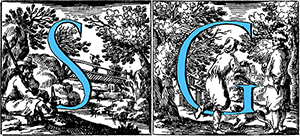
Van OSTADE Adriaen
(Haarlem 1610 – 1685)
Painter, engraver and Dutch designer, constantly active in Haarlem, his hometown.
The first-born son of Jan Hendricx, a weaver from the city of Ostade near Eindhoven.
Although Adriaen and his brother Isaack were natives of Haarlem, they both adopted the name ‘Van Ostade’ for their artistic career. Together with his brother he was a pupil of the famous portrait painter Frans Hals, who however has little influence on his artistic style.
More significant was rather the influence first by Pieter Bruegel and Adriaen Brouwer and subsequently by Rembrandt, from whom he imitated especially the lighting effects, both in its masterpieces painted as in those engraved.
In 1634 he entered the guild of painters of Haarlem (Guild of Saint Luke) of which he later became dean. Twice married (1638 and 1657) he was twice a widower with only one daughter, Maria Johanna, who he had from his second wife Anna Ingels. Around the mid-seventeenth century the city of Haarlem was recognized as an important cultural centre, able to attract the best young talents of the time to be trained in the workshops of famous artists.
So, also in the workshop of Van Ostade there were several painters and engravers who, like him, have favored the scenes of the peasant genre: Cornelis Pietrsz Bega, Cornelis Dusart, Michiel Van Musschier.
He also painted religious subjects, portraits and landscapes. Van Ostade was a prolific artist, usually performing his oil paintings on small-format wood panels.
He has also worked in watercolor and has produced vivid pen drawings and etchings.
A fertile painter and engraver, Adriaen Van Ostade has treated in simple compositions and narrative genre scenes of popular life, interiors of taverns, country dances, artisans and street vendors.
Ostade was a contemporary of David Teniers the Young, also a painter of the popular genre. As Ostade, also Teniers spent his life painting various subjects, scenes set in taverns and village festivals.
In the works of the two artists, Ostade and Teniers, different scenes are depicted, represented by the different conditions of the agricultural classes of Holland and Brabant.
After Rembrandt, van Ostade was one of the greatest interpreters of graphic art in the Netherlands.
Equipped with the highest technical quality, he was able to merge in his etchings the poetry with the realism Dutch villages of the 16th century. Shortly after his death, over 200 of his paintings, numerous copies of his etchings and the engraved plates were sold under the control of Johannes Vermeer, representative of the Guild of Saint Luke.
The works of Adriaen van Ostade can be admired in the large collections scattered in the main cultural centres of northern Europe from St. Petersburg to London.
Buckingham Palace has a large number of his works and as many are kept in private collections in England.


